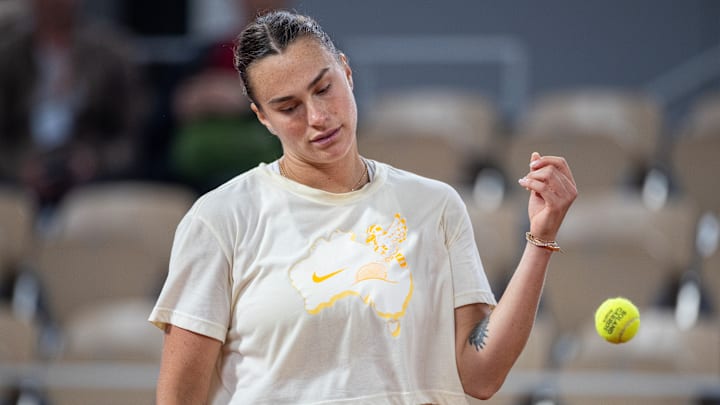Tennis is all about how players match up against each other, but Aryna Sabalenka seems to do everything Jelena Ostapenko does, but better. She is a better player overall, so why isn't her head-to-head stronger against the world No.1?
One of the reasons could be the occasion and frequency. The pressure for Sabalenka is bigger when she faces Swiatek because of the occasion. She faces Swiatek in the semifinals or finals of big events almost every time.
On the other hand, Ostapenko has only faced Swiatek in the round of 16 or before. Swiatek, just like other great players is much more beatable before she reaches the final. It would be interesting to see how Ostapenko and Swiatek match up if they meet at the business end of the tournament.
Sabalenka has played Swiatek nine times in the last three seasons (including five times on clay), meanwhile, Ostapenko has played Swiatek only twice since the start of 2022 and has never faced her on clay. The more you play against someone, the better you know their game. These are big reasons but they are not the only reasons.
The dynamics of Aryna Sabalenka and Jelena Ostapenko's matches against Iga Swiatek
Aryna Sabalenka's return of serve isn't nearly as good as Ostapenko's. She often misses a truckload of returns in a row and doesn't usually place consistent pressure on return games. Ostapenko dispatches Swiatek's kick serves way more consistently.
First-strike tennis is key against Swiatek. If she is allowed to take the initiative, she wins the point. Ostapenko creates an advantage in a rally right from the start. She can hit flat and early from both wings with less security which can rush Swiatek more. For her, it's all about winning the point in 2-3 shots and goes for the winner off every groundstroke.
Sabalenka hits with a lot of power but with topspin too and she generally waits for the right opportunity to hit a winner. Swiatek feels more comfortable rallying against Sabalenka since she does not go full-blood on every shot.
Ostapenko is dangerous because she doesn't let Swiatek play her game and gives her no rhythm. It's very difficult to read Ostapenko as she doesn't care about patterns or building points and will hit whatever she wants. Sabalenka usually tries to follow a gameplan and Swiatek can read it. Ostapenko's one-dimensional game works against Swiatek because she doesn't have second thoughts or plan B. Sabalenka can also get tight in close matches and doesn't serve at her normal parameters.
Ostapenko deals with high-bouncing balls very well. Swiatek's high bouncing balls land around the chest/shoulder height of Ostapenko and she has no problems attacking those balls. This is the perfect strike zone for her unorthodox flattish forehand.
An obvious contrast is when she faces Petra Kvitova or Elena Rybakina who hit such a low bouncing ball that she always has some trouble against them. Ostapenko is also one of the few players capable of flicking her wrist quickly on both wings to change the direction of the ball at the last minute and this ability plus disguise gives Swiatek a lot of trouble.
I’d also like to point out how vulnerable Sabalenka is against Swiatek’s jamming serves. With her long backswing on the forehand wing, she struggles to get out of the way, and usually, her reply when jammed is a sitting ball for the world No.1. Ostapenko is so much better in that aspect. Her forehand is way more compact and short and can hit offensively even when jammed.
